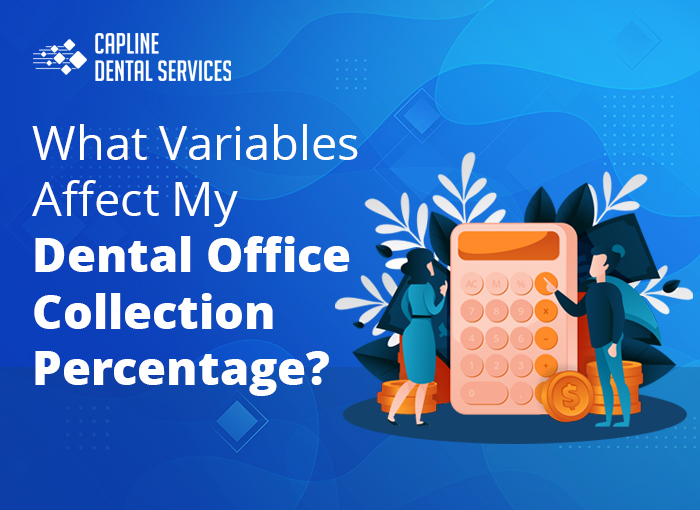
What Variables Affect My Dental Office Collection Percentage?
Towards the close of the month, after a reasonable volume of dental billing services, a practice might wonder why such meager profits are being generated month after month. Why do many successful months still not generate a substantial sum of earnings?
Numerous factors come into play when deciphering why profitability or earnings do not meet expectations. Some of these include negotiated rates, copayments, adjustments, and insurance write-offs. These variables can alter the collection percentage amount, which in turn impacts the dental office collection percentage.
Factors influencing the collection rate:
Errors on the insurance claim form:
Collections encompass two primary sources: patient payments and insurance payments. When patients receive treatment or undergo a procedure, they must settle their portion of the bill as part of the patient payment.
The remainder of the cost is then to be recovered by the insurance company. Inputting precise information is crucial when forwarding claims to insurance companies. Incorrect numbers, dates, or misspelled information can result in a claim denial. The dental team then has to review the submission and figure out what went wrong.
Missing out on the insurance aging report:
A dental practice will have many insurance companies from whom payments are expected. An insurance aging report is a chronologically compiled list of insurance companies that owe the practice money. This process is time-consuming, but it is critical to send reminders periodically to these insurance companies.
Opportunity loss due to insurance write-offs:
This is an uncontrollable factor that influences the collection percentage rate. Insurance write-offs refer to all services offered to patients for which the practice does not receive any payment. When a patient is part of the practice's network, the insurance company decides the maximum permissible amount that can be billed for a particular treatment or procedure.
For instance, the practice might charge USD 800 for a specific procedure, but the insurance plan permits billing only up to an agreed-upon rate of USD 700. Consequently, the practice has to waive the remaining amount, thus impacting the collection percentage.
Insurance verification is essential:
Before any dental procedure, it's crucial to confirm the patient's insurance provider. Moreover, the patient should be well-informed and able to comprehend the extent of their insurance coverage for the procedure. Having this discussion upfront will enable easier collection of the amount payable by the patient.
A rigid and thorough process for check-in and check-out:
While the term "rigid" may carry a negative connotation, it can be positive if everyone in the practice understands the set protocols in the office. During check-in or when scheduling an appointment over the phone, the team must gather all necessary data for insurance verification.
This facilitates a clearer understanding of what the insurance will cover and what the patient will be responsible for during their visit. Accepted forms of payment and the requirement for payment on the day of their procedure must also be communicated to the patient.
A trained and updated team at the practice:
It's essential for the team to be well-informed about check-in and check-out procedures, emphasizing the significance of collecting payments from patients on the day of their procedure, as well as the proper process for submitting insurance claims. Those responsible for billing need comprehensive training on the billing software, ensuring efficient and prompt posting of payments.
Adjustments:
Adjustments constitute a smaller component that contributes to the dental office collection percentage. However, even minor adjustments, when accumulated over time, can create a sizable impact. Adjustments can include fees such as "no-show no-call" or "same-day cancellation" charges, or other additional charges billed to the patient that are beyond standard treatment costs. Discount packages for older patients, first-time patients, and membership-style discounts, among others, also add up to the adjustments total.
Copays:
A simple factor with a substantial impact on the collection rate is collecting all co-payments from patients during their visits. Failing to gather co-pays from patients can significantly affect the collection rate. Collecting a co-payment from the patient during their procedure or treatment enables the practice to secure a substantial portion, positively influencing the collection percentage.